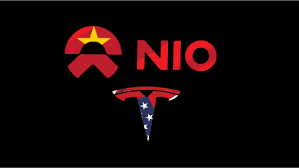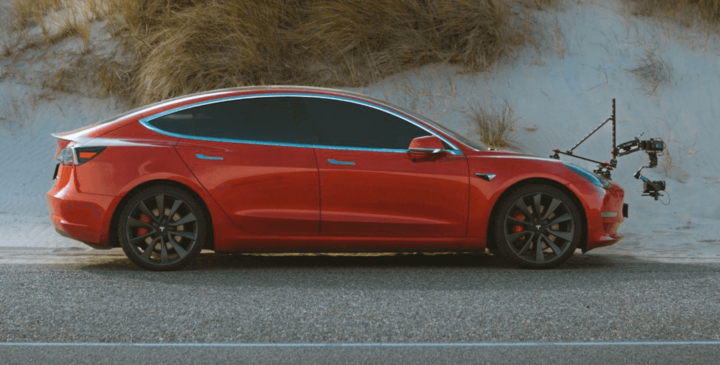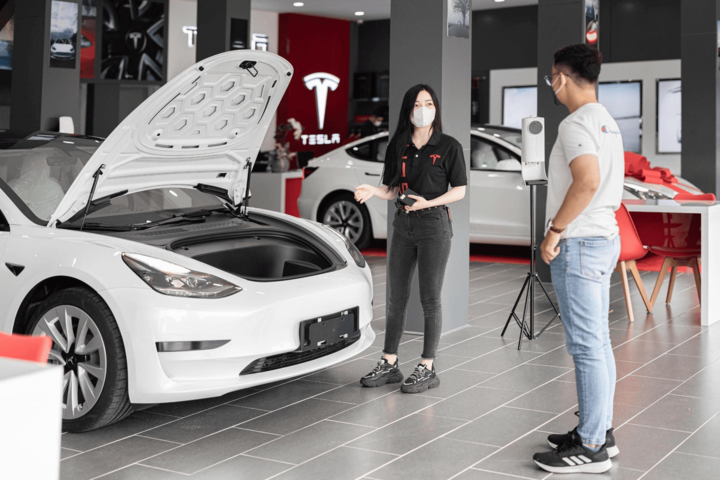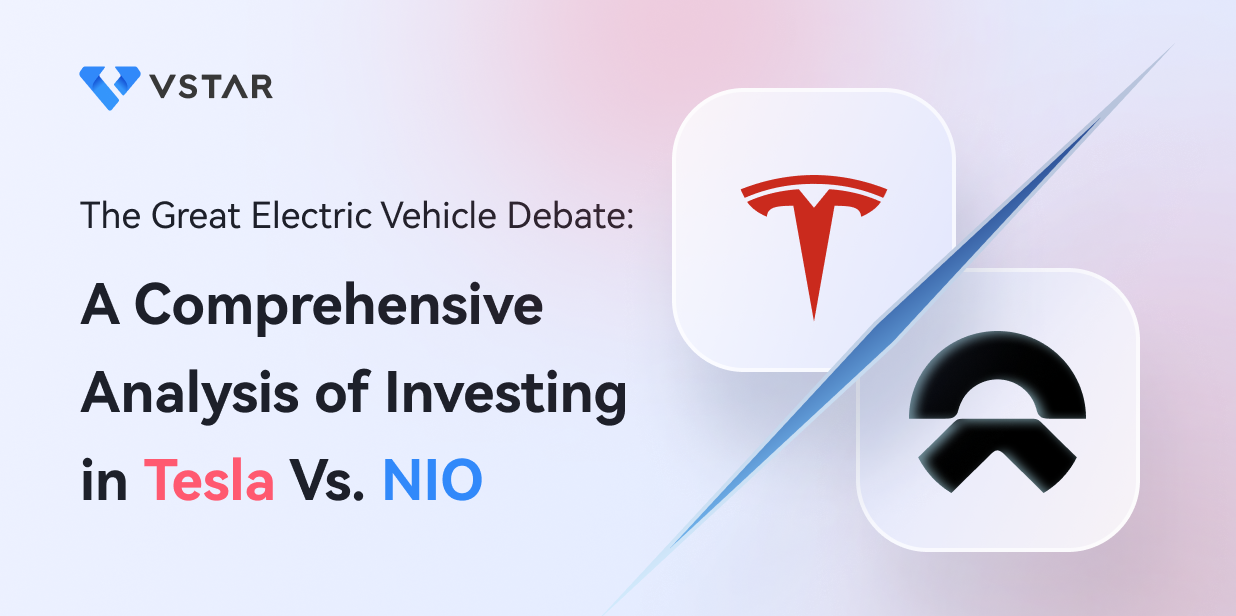The Electric Vehicle space has recently become more competitive with new players coming into play. However, the debate between the two top EV giants persists. A crucial way to make better decisions is to understand the key players and compare their strengths and weaknesses. Are you considering investing in the electric vehicle market but need help deciding between Tesla and NIO? Look no further as we comprehensively compare the two leading EV companies in the industry.
Tesla vs. NIO: Financial Faceoff
Tesla and NIO are major players in the electric vehicle market. Here is a comparison of their financial information over the past 12 months, including market capitalization, revenue, gross margin, net margin, return on equity, and various profitability ratios.
|
Financial Information |
Tesla ($) |
NIO ($) |
|
Market Capitalization (in billions) |
591.996 |
15.903 |
|
Outstanding Shares (in billions) |
N/A |
1.67 |
|
Revenue (Past 12 months, in billions) |
81.462 |
7.16 |
|
Gross Margin (Past 12 months) |
25.60% |
10.44% |
|
Net Margin (Past 12 months) |
15.45% |
-29.30% |
|
Return on Equity (ROE) (Trailing 12 months) |
33.60% |
-49.71% |
|
Earnings per Share (EPS) (Past 12 months) |
3.62 |
-1.14 |
|
Earnings Before Interest, Taxes, Depreciation, and Amortization (EBITDA) (Past 12 months, in billions) |
17.375 |
N/A |
Based on the financial information provided in the table, it is evident that Tesla outperforms NIO in various key financial metrics. Tesla's revenue is over 11 times greater than NIO's, indicating its dominance in the electric vehicle market. Moreover, Tesla's gross margin is significantly higher than NIO's, which suggests that Tesla generates more profits per dollar of revenue. Tesla is also more profitable than NIO, with a higher net profit margin.
Tesla and Nio's Battle for Dominance in EV Market
Tesla and Nio's Market Share and Sales Compared to Competitors
Tesla has a larger market share than Nio in the electric vehicle market. As of 2022, Tesla's market share was around 17%, while Nio's was around 1%.
● In terms of sales figures, Tesla sold around 909,000 electric vehicles in 2021, which is significantly higher than Nio's sales figure of around 113,000 electric vehicles in the same year.
● While Nio primarily focuses on the Chinese market, Tesla has a more global reach, with sales and market presence in multiple countries.

Tesla has more market share than Nio. However, Nio's focus on the Chinese market may give it an advantage in that specific region, and its innovative business model and technology may help it gain ground in the future.
Even with Tesla and Nio’s dominance of the EV market, several other established players in the EV space have emerged. These include traditional automakers such as Volkswagen, General Motors, and Ford, as well as newer companies like Rivian and Lucid Motors.
Although these companies continue to gain prominence, they are not close to Tesla and Nio yet. These companies invest heavily in EV production and are expected to compete fiercely for market share in the coming years.

Tesla vs. NIO: Product Development, Brand Recognition, and Innovation
Comparison of Product Development
Tesla's product pipeline includes a range of electric vehicles, energy storage systems, solar products, and related accessories. NIO's main product stream consists of electric vehicles such as the ES6, ES8, EC6, ET7, and ET5, all built on the company's second-generation technology platform, NT2.0.
1. Electric Car Offerings:
Tesla has several car models, from the high-end Model S sedan to the more affordable Model 3 and Model Y crossover SUVs. NIO's electric car offerings are designed for both the Chinese and non-Chinese markets. The cars have long ranges and advanced technology softwares.
2. Battery technology
Tesla's electric vehicles also use lithium-ion batteries, known for their high energy density and long cycle life. The company produces its batteries in-house at its Gigafactories and has developed its battery chemistry, which it calls the "4680" cell.
NIO has taken a different approach by separating the battery from the car and offering its BaaS program. This allows customers to subscribe to plans to swap and upgrade batteries at NIO's swapping stations, which can be a more cost-effective option for some customers.
3. Charging Infrastructure:
Tesla has a vast network of Superchargers, which offer fast charging speeds for long-distance travel. The company also provides destination charging at hotels, restaurants, and other locations. Tesla owners can also use third-party charging networks, such as ChargePoint and EVgo, but may incur additional fees.
NIO has a charging station network, including standard and fast chargers. The company's fast-charging stations, called Power Swap stations, allow customers to swap their EVs' batteries in just a few minutes. NIO has also partnered with other charging networks in China to expand its charging options for customers.

4. Brand Recognition:
Tesla has established itself as a leading brand in the electric vehicle industry, known for its innovation, sleek designs, and high-quality products. The company has a strong reputation for its cutting-edge technology, and its brand recognition is well-established globally. Tesla's loyal fan base and its iconic founder, Elon Musk, have also contributed to its brand recognition and popularity.
NIO is a relatively new player in the electric vehicle market, having only been founded in 2014. While the company has gained popularity in China and expanded globally, its brand recognition is not as established as Tesla's. NIO has focused on creating a brand identity centered around sustainability and high performance, but it still has work to do to establish its brand as a household name in the electric vehicle industry.
Tesla vs. Nio's Future Potential and Challenges
EV Market Trends And The Competition Between Tesla And NIO
Electric vehicle (EV) market trends are rapidly evolving, and the competition between Tesla and NIO is heating up. Here are some key points to consider:
Technological Advancements: Tesla and NIO are known for their technological advancements in the EV market. Tesla is known for its Autopilot system, which offers self-driving capabilities, and its advanced battery technology. NIO, on the other hand, is known for its swappable battery system and the NIO Power mobile charging service.

Driving Range and Charging Infrastructure: Driving range and charging infrastructure are essential for EV consumers. Tesla is known for its long driving range, with its Model S boasting a range of up to 405 miles. Tesla also has an extensive Supercharger network, providing convenient and fast charging options. NIO's driving range is comparable, with its ES6 and ES8 models offering a range of up to 358 miles. Nio also has a strong charging network.
Autonomous Driving Capabilities: Tesla is considered a leader in autonomous driving technology, with its Autopilot system offering advanced self-driving capabilities. NIO is also developing self-driving technology, with its NIO Pilot system currently in development.
Environmental Sustainability: Tesla and NIO focus on environmental sustainability to reduce carbon emissions. Tesla's focus on sustainability is reflected in its mission to accelerate the world's transition to sustainable energy, while NIO focuses on creating a sustainable lifestyle for its customers through its eco-friendly products and services.
EV Industry Regulations: Opportunities and Challenges for Tesla and NIO
Governments worldwide are increasingly implementing policies to support the transition to electric vehicles to reduce greenhouse gas emissions and combat climate change. In the United States, for example, the Biden administration has set a goal for half of all new cars sold by 2030 to be electric.
China, the largest EV market in the world, has also been implementing policies to support the growth of the EV industry. The Chinese government has set a goal for new energy vehicles (NEVs), which include battery electric, plug-in hybrid, and fuel cell vehicles, to account for 20% of all recent car sales by 2025. These measures will likely increase demand for electric vehicles, which could benefit both Tesla and NIO.
Economic Conditions and Industry Disruptions: Impact on Tesla and NIO
The EV space is becoming increasingly saturated with more players coming up. This has created enormous pressure on pricing and profit margins for the two leading EV producers.
Another challenge for Tesla and NIO is the global semiconductor shortage, which has disrupted the production schedules of many industries, including the automotive industry. This has resulted in delays in the production and delivery of vehicles for both companies.
On the flip side, disruptions in the industry could create opportunities for Tesla and NIO as increasing demand for EVs can lead to more production.
Comparing Tesla and NIO Stock: Which is the Better Investment?
An analysis of Nio and Tesla's recent performance and potential for growth can shed more light on which company to invest in. Here is an analysis of both companies' financial performance:
| Financial Performance |
Tesla |
NIO |
|
Revenue (past year) |
$81.462 billion |
$7.16 billion |
|
Gross Margin (TTM) |
25.60% |
10.44% |
|
Debt-to-Equity Ratio |
6.93% |
67.72% |
|
Potential for Growth |
Reached peak |
Potential for exponential growth |
The table above provides a comparison of key financial metrics between Tesla and NIO. While both companies are in the electric vehicle industry, their financial performance and outlook differ significantly. Tesla has higher revenue, gross margin, EPS, and net margin than NIO. It also has a much lower debt-to-equity ratio, indicating less debt than its equity. On the other hand, NIO has the potential for exponential growth, while Tesla has reached or almost reached its peak. This means NIO's stock could rise exponentially quickly, while Tesla's growth may be more limited.
Several factors could impact the future earnings and stock price of Tesla and NIO:
For Tesla, increased competition in the EV market, fluctuations of prices, continued investment in research and development for new EV models and technologies could impact its profitability.
As for NIO, increased competition in the Chinese EV market could impact its market share, revenue growth, and ability to expand globally. NIO's ability to deliver its products on time, meet demand, and maintain its battery swap technology advantage over competitors could also affect its market position.
Tesla vs. NIO: Risks, Opportunities, and Future Outlook in the EV Industry
Analysis Of Key Risks And Opportunities For Investors
● Stock Price Volatility: Tesla and NIO's stock prices are subject to market volatility. There is always a risk of fluctuating stock prices due to factors such as overall market conditions or company-specific issues.
● Production Issues: The production of electric vehicles (EVs) is complex, and any disruptions or delays in production can impact a company's financial performance and stock prices.
● Competition: Tesla and NIO face competition not only from each other but also from other established automakers and new entrants in the EV space.

Factors To Consider When Deciding Between Investing in Tesla and NIO
● Growing Demand for EVs: The demand for EVs is expected to continue growing, driven by increasing environmental concerns and government incentives to promote EV adoption. This trend presents a significant opportunity for Tesla and NIO to expand their market share and revenue.
● Global Expansion: Tesla has a significant presence in the US, Europe, and Asia, while NIO mainly focuses on China. However, both companies have the opportunity to expand their operations and increase their market share in other regions, which could drive long-term growth.
Which is a better long-term investment: NIO or Tesla?
Nio and Tesla have the potential to do well in the long-term as each has their unique strengths and weaknesses. Both companies have sophisticated technologies and strategic partnerships to aid their growth.
● Tesla has a strong track record of growth and innovation in the EV industry and is currently the market leader in market cap and revenue.
● NIO has shown significant growth potential in recent years, particularly in the Chinese market, and is known for its innovative battery-swapping technology.

Investing in Tesla vs. NIO: A Guide to Trading EV Stocks
There are three main methods of trading and investing in Tesla and Nio stocks. They are: holding shares, options trading, and CFDs trading.
Holding Shares
Holding shares in a company means owning a portion of that company's ownership. Shares are a way to invest in a company and become a part owner. When you buy company shares, you purchase a piece of that company's future profits and growth potential.
Buying Shares: The first step in holding shares is to buy them. This can be done through a brokerage account or an online trading platform. You can purchase individual shares or invest in a mutual fund or exchange-traded fund (ETF) with a diversified portfolio of stocks.
Owning Shares: Once you have bought company shares, you become a shareholder with certain ownership rights. As a shareholder, you have the right to vote on company matters, such as the election of the board of directors and significant corporate decisions. You also have the right to receive dividends if the company pays them and to sell your shares at any time.
Risks and Rewards: Holding shares in a company can be a rewarding experience, some of the potential rewards associated with holding shares include dividend payment and capital appreciation, but it also carries certain risks. The value of your shares can fluctuate widely based on market conditions, company performance, and other factors. You may also lose your entire investment if the company goes bankrupt or is delisted from the stock exchange.
Strategies For Long-Term Investors
Holding shares can be a powerful wealth-building tool for investors with a long-term investment horizon. Some strategies to consider when trading long-term include:
Buy and hold: One of the simplest and most effective long-term strategies is to buy shares in high-quality companies and hold them for many years, even decades, allowing the power of compound interest to work its magic.
Dollar-cost averaging: This involves investing a fixed amount of money in a particular stock or mutual fund at regular intervals, regardless of the share price. This can reduce the impact of market volatility and potentially lead to better long-term returns.
Dividend reinvestment: By reinvesting dividends into the stock, investors can compound their returns over time and build wealth more quickly.

Strategies For Short-Term Investors
Short-term trading strategies tend to be riskier and require more skill and experience. However, you can make more profits from short-term trading. Some approaches to consider include the following:
Technical analysis: This involves analyzing charts and market data to identify short-term trends and patterns that can be used to make buy and sell decisions.
News-based trading: Short-term traders can profit from quick price movements in the stock market by keeping up-to-date on company-specific news and market-moving events.
Options trading: This involves using options contracts to take advantage of short-term price movements in a particular stock or index.
Options Trading
Options trading is a financial instrument that allows investors to buy or sell the right to buy or sell a particular asset at a specified price within a specific timeframe. Unlike holding shares, which involve the actual ownership of a company, options trading allows investors to speculate on the market's direction without the need for true ownership.
Critical Concepts in Options Trading
There are two types of options: call options and put options. A call option gives the holder the right, but not the obligation, to buy an underlying asset at a specified price within a specified timeframe. On the other hand, a put option gives the holder the right, but not the obligation, to sell an underlying asset at a specified price within a specific timeframe.
When investors buy an option, they pay a premium for the right to exercise that option. The premium price is determined by several factors, including the underlying asset's current price, the option's strike price, the time left until the option expires, and the underlying asset's implied volatility.
Risks and Benefits of Options Trading
Options trading can be highly risky, as investors can lose their entire premium if the underlying asset's price does not move in the direction they anticipated. However, options trading also offers the potential for high returns, as the premium paid for an option is typically lower than the cost of buying the underlying asset outright.
To minimize risk in options trading, investors can use strategies such as writing covered calls, which involve selling call options on shares they already own. This strategy allows investors to collect the premium from selling the option while limiting their downside risk, as they already own the underlying shares.
CFDs Trading
CFDs trading involves entering into a contract with a broker to exchange the difference in the price of an asset between the time the contract is opened and when it is closed. The profit or loss made on the trade is determined by the difference in price between these two points.
Risks and Benefits of CFDs Trading
Lower transaction costs: CFDs trading typically involves lower transaction costs than traditional trading methods, such as buying stocks, as traders only need to pay the spread (the difference between the buy and sell price).
Leverage: CFDs trading also allows traders to leverage their positions, meaning they can open more prominent positions with smaller amounts of capital. This can increase profits but also increase the risk of losses.
A diverse range of assets: CFDs trading offers access to a wide range of assets, including stocks, indices, forex, and commodities, allowing traders to diversify their portfolios.
However, there are also significant risks to consider, such as:
No ownership of assets: When trading CFDs, traders do not own the underlying asset, which can limit the ability to make long-term investments and benefit from potential dividend payments.
Counterparty risk: CFDs trading involves trading with a broker, which means there is always a risk that the broker may go bankrupt or become insolvent, leading to potential losses for the trader.
Trading CFDs offers advantages and disadvantages compared to other trading methods, such as holding shares or trading options. Holding shares involves owning a portion of a company and benefiting from potential dividends. It also requires significant capital and can be subject to market volatility. On the other hand, options trading offers more flexibility and potential for hedging but also involves higher transaction costs and risks. Ultimately, the best trading method will depend on the individual trader's preferences and risk tolerance.
If you're interested in starting CFDs trading, here are some steps to take:
● Find a reputable broker: It's essential to find a reputable broker who offers CFDs trading on Tesla and NIO stock. Research the broker's reputation, fees, and trading platform before deciding.
● Develop a trading strategy: Developing a solid trading strategy is crucial before starting to trade. This should include risk management, entry and exit points, and overall trading goals.
● Practice with a demo account: Many brokers offer demo accounts where traders can practice CFDs trading without risking real money. This can be a great way to test different strategies and get a feel for the trading platform before trading with real money.
Why Trade Tesla and Nio Stock CFDs with VSTAR?
If you're specifically interested in trading NIO stock CFDs, VSTAR is a reputable broker offering CFDs on various markets, including Tesla and NIO stock. VSTAR offers a regulated and safe means of trading CFDs, as they are authorized and regulated by CySEC. The broker also offers a low trading cost and fast execution to allow traders to exploit more market opportunities.


Conclusion
Investing in Tesla and NIO can be a lucrative opportunity for investors interested in the electric vehicle market. Tesla is a well-established company with a strong brand and a history of innovation. At the same time, NIO is a relatively new player in the market with a unique business model and promising growth prospects.
Moreover, trading Tesla and NIO stocks through CFDs can offer traders several advantages over traditional stock trading and options trading. CFDs provide traders with leverage, lower transaction costs, and the ability to take advantage of rising and falling prices.
*Disclaimer: The content of this article is for learning purposes only and does not represent the official position of VSTAR, nor can it be used as investment advice.


















